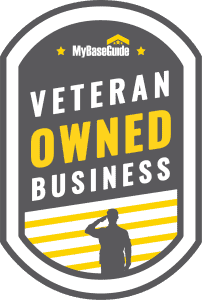Entering the trucking industry as a new CDL (commercial driver’s license) driver can be a challenging and overwhelming process. From navigating the job market to understanding the regulations and requirements of the industry, there are many challenges that new drivers may face. However, with the right training and support, it is possible to overcome these challenges and succeed in the trucking industry.
In this article, we will explore some common challenges new CDL drivers may encounter when entering the job market and provide tips and strategies for overcoming these challenges. We will also discuss the benefits of new CDL driver bridge programs and how they can help new drivers gain the skills and experience needed to succeed in the industry. Whether you are just starting in the trucking industry or are looking to take your career to the next level, this article will provide valuable insights and advice for navigating the challenges of the trucking industry.
New CDL (commercial driver’s license) drivers may face many challenges and issues when trying to enter the job market. Some of the main problems are:
- Lack of experience: Many trucking companies prefer to hire drivers with experience, so it can be difficult for new CDL holders to find a job.
- Competition: The trucking industry is competitive, and there may be many other drivers vying for the same job openings.
- Training costs: Obtaining a CDL can be expensive as it requires specialized training and may involve paying for a CDL exam, a medical exam, and other costs.
- Limited job opportunities: Some areas may have a limited number of trucking job openings making it harder for new drivers to find work.
- Regulations and requirements: The trucking industry is heavily regulated and new drivers may struggle to understand and comply with all of the rules and regulations.
- Physical demands: Driving a commercial vehicle can be physically demanding. Some drivers may struggle with the long hours and time spent on the road.
- Stress: The trucking industry can be stressful with tight delivery schedules and pressure to meet deadlines.
Overall, while it can be challenging for new CDL drivers to enter the job market, with perseverance and a strong work ethic, it is possible to find employment in the trucking industry. Next, we will explore each problem in more detail and discuss solutions to address them.

Lack of experience
The first challenge new CDL drivers may face when entering the job market is a lack of experience. Many trucking companies prefer to hire drivers with experience, as they are generally considered more reliable and safer on the road. This can make it difficult for new CDL holders to find a job, as they may not have the necessary experience to be considered for certain positions.
There are a few ways that new drivers can try to overcome this challenge:
- Consider starting with a smaller trucking company or a company that is willing to train new drivers. These types of companies may be more inclined to give new drivers a chance and provide them with the necessary training and support.
- Look for entry-level positions or jobs that do not require a lot of experience. For example, you may be able to find a job as a driver’s assistant or a truck washer, which can help you gain experience and work your way up to more advanced positions.
- Consider participating in a CDL training program or an apprenticeship program, which can provide you with the necessary skills and experience to enter the job market.
- Network with people in the industry to try to get your foot in the door by volunteering or interning with a trucking company.
While a lack of experience can be a challenge for new CDL drivers, it is not insurmountable. By being proactive and taking advantage of opportunities to gain experience, you can increase your chances of finding a job in the trucking industry.

One specific type of opportunity is the new CDL driver bridge programs, which are training programs designed to help new drivers gain the skills and experience needed to enter the trucking industry. Trucking companies or vocational schools typically offer these programs, which may vary in length and intensity.
Bridge programs are typically designed for people who have recently obtained their CDL but have little or no experience driving a commercial vehicle. The programs combine classroom instruction with hands-on training and may include a mentorship or apprenticeship component.
The goal of a new CDL driver bridge program is to provide new drivers with the skills and knowledge they need to succeed in the trucking industry, including:
- Safety training: Often include training on safe driving practices, such as proper vehicle maintenance, defensive driving techniques, and how to handle emergencies.
- Operating procedures: May cover topics such as how to properly load and unload a vehicle, complete paperwork, and comply with regulations and requirements.
- Driving skills: May include hands-on training to help new drivers build their driving skills, such as maneuvering in tight spaces, backing up, and driving in adverse weather conditions.
- Industry knowledge: May also provide new drivers with an overview of the trucking industry, including topics such as freight rates, logistics, and the role of a driver in the supply chain.
New CDL driver bridge programs can be a valuable resource for new drivers looking to enter the trucking industry. By providing a combination of classroom instruction and hands-on training, these programs can help new drivers gain the skills and knowledge they need to succeed on the job.

Competition
This is another challenge new CDL drivers may face when entering the job market. The trucking industry is competitive, and there may be many other drivers vying for the same job openings. This can make it difficult for new drivers to stand out and get noticed by potential employers.
There are a few ways that new drivers can try to overcome this challenge:
- Build a strong resume: Make sure to highlight any relevant skills or experience you have, such as any previous jobs that involved driving or working with vehicles. You should also include any certifications or training you have received, such as a CDL or a Hazmat endorsement.
- Network with people in the industry: Building relationships with people in the trucking industry can be a great way to learn about job openings and get your foot in the door. Consider joining trucking industry groups or attending industry events to meet potential employers.
- Market yourself: Don’t be afraid to let potential employers know about your skills and qualifications. Consider writing a cover letter that explains why you are a good fit for the job and highlights any relevant experience or training you have.
- Consider starting your own trucking business: If you are having trouble finding a job with an established trucking company you may want to consider starting your own business. This can be a challenging and risky option, but it can also be a rewarding way to enter the industry on your own terms.
While competition can be tough in the trucking industry, there are ways that new drivers can increase their chances of finding a job. By building a strong resume, networking, and marketing yourself effectively, you can increase your chances of standing out in a crowded job market.

Training costs
Another problem is that a commercial driver’s license (CDL) can be expensive to obtain. It requires specialized training and may involve paying for a CDL exam, a medical exam, and other costs. Some of the specific training costs that new CDL drivers may encounter include the following:
- CDL exam fees: In most states, you will need to pay a fee to take the CDL exam, including a written and skills tests. The exact cost will vary depending on the state where you apply, but it is typically around $100 or more.
- Training programs: Some CDL training programs charge tuition fees, which can range from a few hundred to several thousand dollars, depending on the length and intensity of the program.
- Books and materials: Many CDL training programs provide students with textbooks, study guides, and other materials, which may incur additional costs.
- Medical exams: All CDL drivers must pass a medical exam to ensure they are physically fit to operate a commercial vehicle. The cost of this exam can vary, but it is typically around $100 or more.
- CDL endorsements: Some CDL drivers may need to obtain additional endorsements, such as a Hazmat endorsement, which requires additional training and testing. These endorsements can also involve additional fees.
Obtaining a CDL can be expensive, but there are ways to reduce the cost. Some CDL training programs offer financial aid or payment plans and some trucking companies may cover some or all of the training costs for new hires. Additionally, some states provide grants or scholarships for CDL training which can help cover the cost of tuition and other fees.

Limited job opportunities
The next challenge new CDL drivers may face when entering the job market is limited job opportunities in their area. While the trucking industry is generally in high demand, with a shortage of qualified drivers, this demand is not evenly distributed across the country. Some areas may have a higher concentration of trucking companies and a greater need for drivers while others may have fewer job openings.
There are a few ways that new drivers can try to overcome this challenge:
- Consider relocating: If you are having trouble finding a job in your current area you may consider moving to a region with a higher demand for trucking services. This could involve moving to a different state or a larger city with a larger trucking industry.
- Look for job openings with trucking companies that serve a wider area: Some trucking companies operate nationally or even internationally and may have job openings in a variety of locations. By considering these types of companies, you may be able to find a job that allows you to travel and see more of the country.
- Be flexible: If you are willing to work odd hours or travel long distances, you may be able to find more job opportunities. Some trucking companies may have a greater need for drivers who can work unusual shifts or handle long hauls.
While limited job opportunities can be a challenge for new CDL drivers, there are ways to increase your chances of finding work. By being flexible and considering different locations and types of companies, you may be able to find a job that meets your needs and goals.

Regulations and requirements
The trucking industry is heavily regulated so new CDL drivers may struggle to understand and comply with all the rules and regulations. Some of the specific regulations and requirements that new drivers may need to be aware of include:
- Hours of service: Federal regulations limit the number of hours that CDL drivers can work in a day and in a week to ensure that they are rested and alert while driving. Drivers must keep track of their hours of service using a logbook or an electronic logging device (ELD).
- Vehicle inspections: CDL drivers are responsible for conducting pre-trip inspections of their vehicle to ensure it is safe to operate. Drivers must also comply with federal regulations regarding the maintenance and repair of their vehicles.
- Drug and alcohol testing: CDL drivers are subject to random drug and alcohol testing and must have a blood alcohol concentration (BAC) of 0.00% while on duty.
- License requirements: CDL drivers must maintain a valid CDL and meet all of the licensing requirements set by their state, including passing medical exams and keeping their license up to date.
- Weight and size limits: CDL drivers must comply with federal and state regulations regarding the weight and size of their vehicles and the load they are carrying.
The regulations and requirements in the trucking industry can be complex, so it is essential for new drivers to familiarize themselves with these rules to ensure that they are complying with them at all times. Failing to comply with these regulations can result in penalties, fines, and even the loss of your CDL.

Physical demands
Driving a commercial vehicle can be physically demanding. Some new CDL (commercial driver’s license) drivers may struggle with the long hours and time spent on the road. Some of the specific physical demands that drivers may encounter include:
- Long hours: CDL drivers often work long and irregular hours and may be required to drive for extended periods of time. This can lead to fatigue which can be a safety hazard.
- Repetitive motion: Many of the tasks involved in driving a commercial vehicle, such as steering and shifting gears, involve repetitive movements that can lead to muscle strain and fatigue.
- Heavy lifting: CDL drivers may be required to load and unload their vehicle which can involve lifting and carrying heavy packages and equipment. This can be physically demanding and lead to injuries if not done properly.
- Sitting for long periods: CDL drivers spend a lot of time sitting in the cab of their vehicle which can lead to muscle stiffness and discomfort.
- Exposure to the elements: CDL drivers may be exposed to extreme weather conditions, such as extreme heat or cold, while on the road. This can be physically demanding and lead to health problems if drivers are not adequately prepared.
Overall, while the physical demands of driving a commercial vehicle can be challenging, there are ways that drivers can mitigate these challenges and stay healthy and safe on the job. Drivers should be aware of the potential physical demands of the job and take steps to manage them, such as taking regular breaks and stretching, staying hydrated, and wearing appropriate clothing for the weather.

Stress
The trucking industry can be stressful with tight delivery schedules and pressure to meet deadlines. New CDL drivers may struggle with the job’s demands which can lead to stress and other mental health issues. Some of the specific sources of stress that drivers may encounter include:
- Time pressure: CDL drivers are often under pressure to deliver their load on timewhich can be stressful if there are delays or unexpected challenges on the road.
- Physical demands: As mentioned previously, driving a commercial vehicle can be physically demanding. This may lead to stress and fatigue.
- Time away from home: CDL drivers may be required to spend extended periods on the road which can be isolating and may lead to feelings of homesickness.
- Customer demands: CDL drivers may face demands from customers to deliver their goods on time and in good condition. This can be stressful if there are issues or delays.
- Safety concerns: CDL drivers may be under pressure to drive safely which can be stressful if facing challenging road conditions or other safety hazards.
While stress is a common challenge in the trucking industry, there are ways that drivers can manage it and maintain their mental health. Drivers should be aware of the potential sources of stress in their job and take steps to manage it, such as taking breaks, staying well-rested, and seeking support from friends, family, or a mental health professional.
The trucking industry can be challenging for new CDL drivers, but it is also a rewarding and fulfilling career path. By understanding the common challenges and taking steps to overcome them, new drivers can increase their chances of success in the industry. From building a solid resume and networking to participating in a new CDL driver bridge program, there are many strategies that new drivers can use to improve their chances of finding a job and building a rewarding career in the trucking industry.
As a new CDL driver, it is crucial to be proactive and take advantage of any opportunities that come your way. Whether you are looking to start your own trucking business or work for an established company, you can build a successful career in the trucking industry by staying focused and working hard. With the proper training, skills, and mindset, you can succeed in the challenging and rewarding world of trucking.

Are you a hiring manager struggling to find qualified candidates in today’s difficult job market? You are in luck because Inflection Poynt’s monthly Sourcing Service is what you have been looking for. Data-driven and technology-backed, we get more candidates in front of you so that you can find and hire the best employees. Contact us today to see how we can help with your hiring needs!



